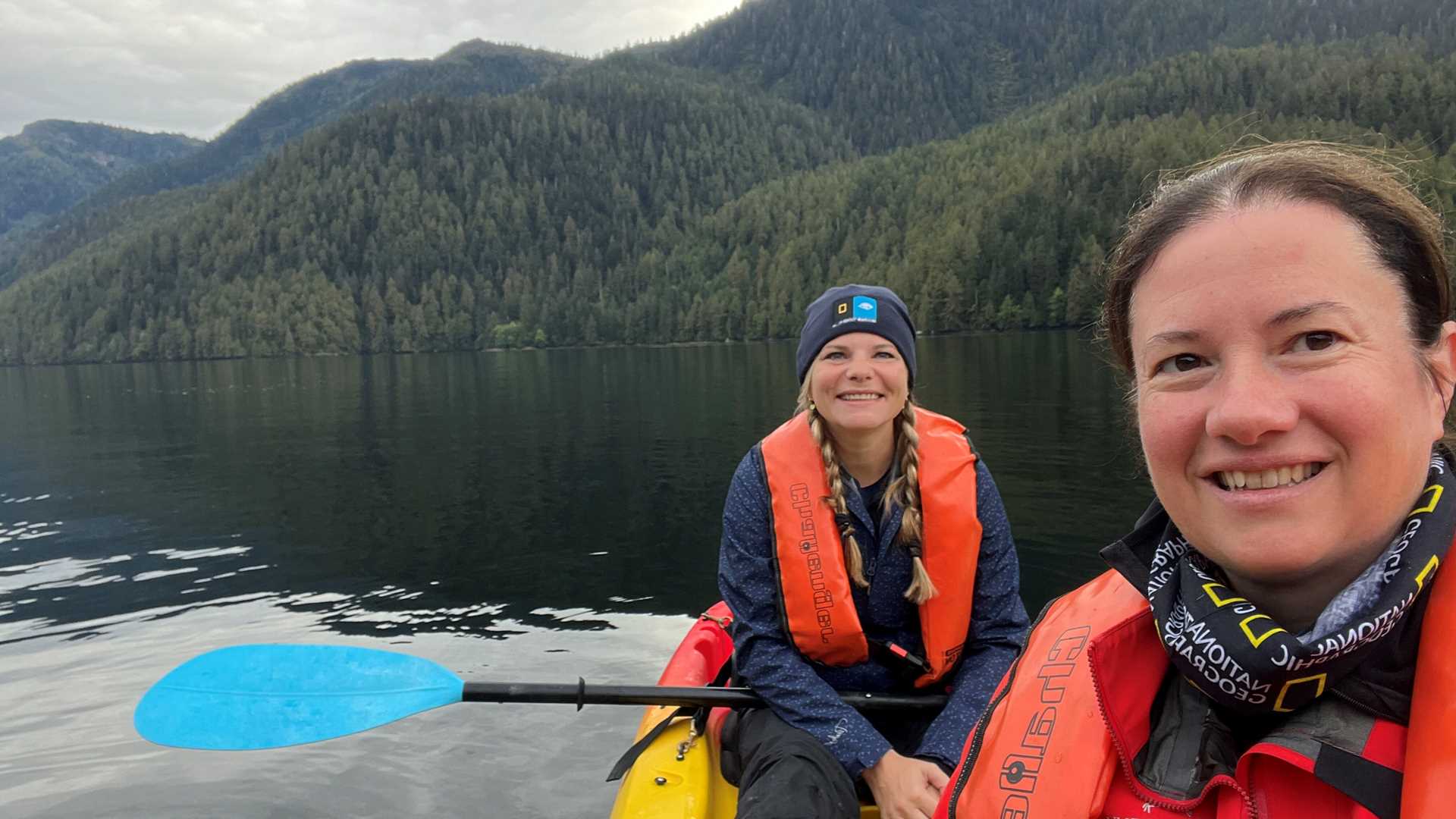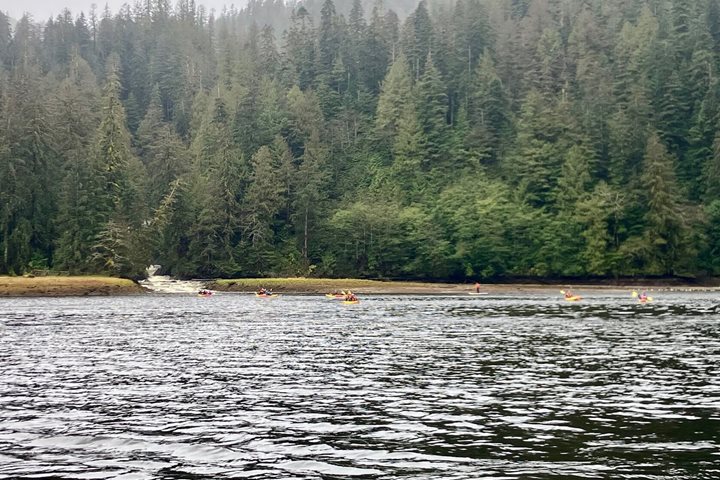The Grosvenor Teacher Fellows have taken over the daily expedition report! This is Alison and Erin, bringing you the day’s highlights from National Geographic Venture.
Throughout the night, we cruised to another remote inlet in British Columbia where we enjoyed the coastal old growth forest by kayaking, paddleboarding, and hiking. On the kayaks, we heard the calls of two kingfishers, and we saw upwards of thirty gulls along the shoreline and the cutest harbor seal popping up his head to check us out.
On the hike through the forest, we were amazed by the abundance of bear activity. Usually, hikes are through rugged terrain, but this time we walked along our first evidence of bears — the bear path. The bears did quite a good job at making a path through the thick undergrowth! The next piece of evidence was a large, bluish piece of scat left by the bear. Our knowledgeable naturalist Emily checked it out and suggested the bear had eaten salal and blueberries. She said this was a bit unusual as bears often eat more barnacles, crabs, and fish at this time of year. As we continued along the bear path, climbing over deadfall and thick moss growth, we came across more proof of bear activity — the remains of two salmon. One was licked to the bone, and one was left whole (except for the brain). The final piece of evidence was down in the muddy stream — bear tracks. Our naturalist suggested that this elusive bear was indeed a brown bear since the footprint showed the inside toe aligned with the outside toe. With all this evidence, we knew a brown bear was recently in the area!
The afternoon was spent cruising through the islands to look for more signs of wildlife. We spotted humpback whales and a black bear feasting by a waterfall. We are excited to see what tomorrow brings!
Text and photographs by Grosvenor Teacher Fellows, Alison Katzko and Erin Schmidt







